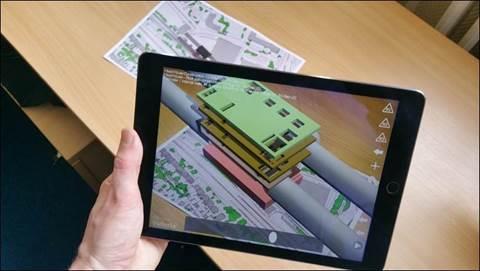Architects are key to developing BIM solutions that enable teams to take control of complex projects in ways we never imagined in construction’s pre-digital days

Over the years, Weston Williamson + Partners has developed a number of solutions to technical BIM problems. New forms of information modelling have opened up a world of possibilities, enabling designers to visualise complex 3D schemes from many viewpoints.
We can strip back layers of detail to reveal more clearly how they go together and take control of what we see. With 4D BIM we are able to use time as a displaying metric and see the programme building in front of your eyes. The technology allows visualisation of the same object from multiple people in different locations and also enables you to zoom in to internal environments (rooms) and back out to see the whole building at the click of a button.
When an iPad with our project specific app is pointed at a construction programme marker, 3D models are super-imposed on real-world objects such as the table within a meeting room
We have provided technical guidance to HS2’s technical directorate on the use of designers models for dynamic construction sequencing (4D BIM) and cost estimating (5D BIM). Our work went into helping to produce an ‘Intelligent Unit Rate Library’ that was developed as part of the cost estimating project scope. This incorporated model and programme quantities with location specific productivity and production rates to provide a dynamic labour, plant and material rate build up for each model based on its geographical location.
Within our HS2 BIM work we synchronised the work breakdown structures within construction programmes with component based model naming hierarchy to automate 4D construction animation sequences. These were presented at design reviews in interactive 3D PDF format or rendered out as animations.

We’ve also been delivering them to HS2’s technical directorate as unity based augmented reality models. When an iPad with our project specific app is pointed at a construction programme (P6) marker, 3D models are super-imposed on real-world objects such as the table within a meeting room. The augmented reality app has been designed to enable designers and clients to review and interact with detailed 3D models of design proposals by viewing them from all angles and distances.
Additional information can be overlaid on the 3D projections to allow more detailed interrogation of the design proposals. Our focus has been on extracting 5D data (by synchronising the BIM component classification with a cost breakdown structure). These tools allow additional layers of information, text, schedules or animations to be displayed on top of the model, enabling group review; collaboration and feedback to be captured.
BIM may pose technical challenges but as this collaboration shows it also opens up possibilities to designers and the whole project team that would never have existed in the pre-digital construction age.
Ali Mowahed, senior associate, Weston Williamson + Partners




























No comments yet